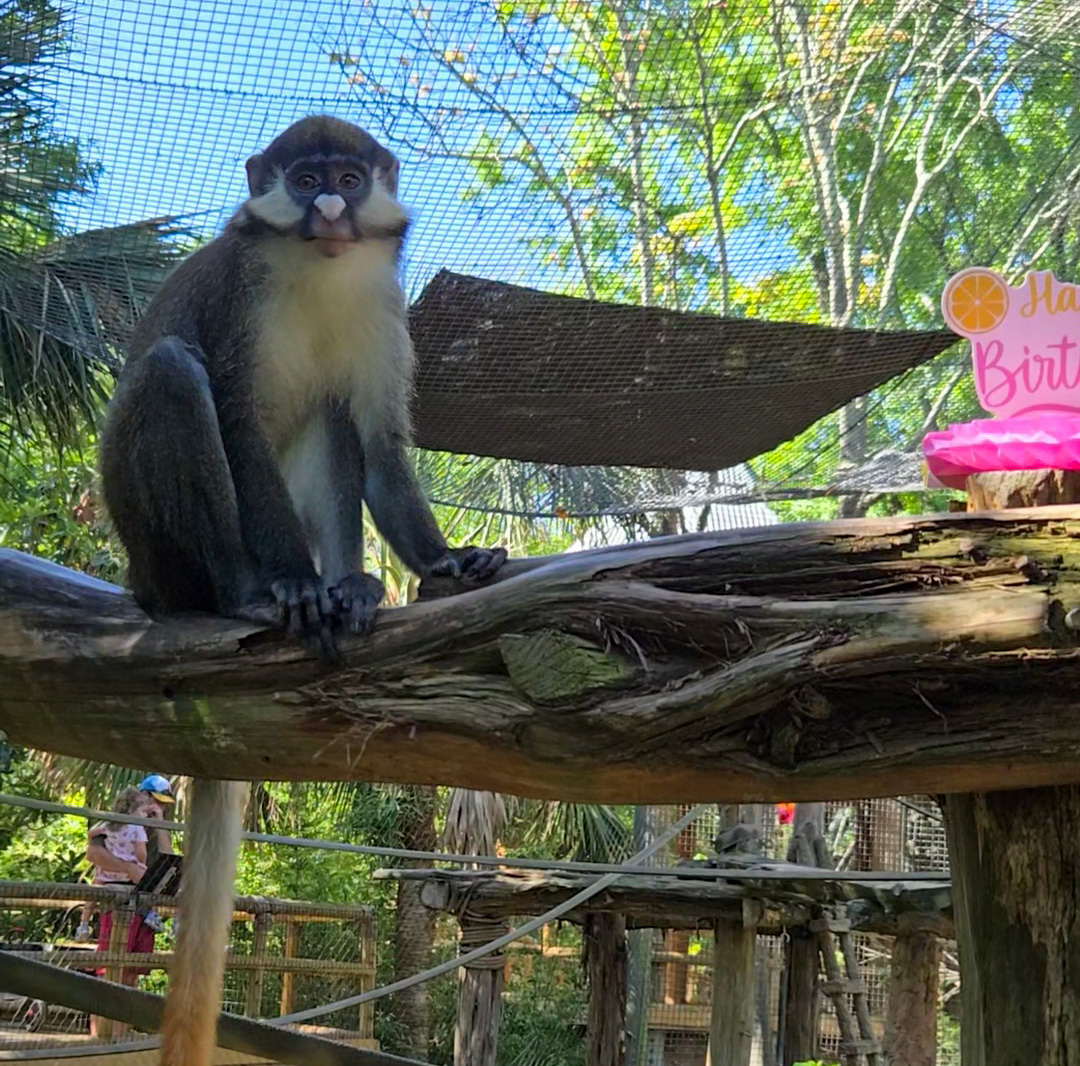- Celebrate the milestone of Peter Rabbit, the Schmidt’s red-tailed monkey, turning five at the Wortham World of Primates.
- Explore the biology, behavior, and habitat of Schmidt’s red-tailed monkeys to understand their role in the ecosystem.
- Highlight the importance of zoo management practices in primate care and conservation initiatives.
- Discuss the significance of wildlife conservation and the role of zoos in fostering environmental awareness.
- Provide insights into the challenges and advancements in primate care, focusing on species-specific needs and welfare.
Peter Rabbit, the Schmidt’s red-tailed monkey, celebrated his fifth birthday at the Wortham World of Primates this week, an event that underscores not only a simple age milestone but also highlights the critical education and conservation work that zoos undertake. As you visit the Wortham facility, you not only encounter Peter Rabbit and his delightful personality but also gain a deeper understanding of how these institutions work to preserve species and educate the public about the rich biodiversity shared by our planet.
Schmidt’s red-tailed monkeys, or Cercopithecus ascanius, are a species found predominantly in the tropical forests of Central and East Africa. These primates are known for their distinctive red tails and cheek pouches used for storing food. Their behavior is a fascinating blend of agility, social interaction, and vocal communication, which serves to strengthen group cohesion and safeguard against predators. Living primarily in expansive social groups, these monkeys maintain a complex social structure, where each member plays a crucial role in the community’s overall stability and survival.
Schmidt’s red-tailed monkeys are frugivorous, meaning they primarily consume fruit, although their diet is supplemented with leaves, insects, and other small animals. This dietary flexibility allows them to adapt to changes in their environment by exploiting different food sources when necessary. Their feeding habits contribute significantly to the ecology of their habitats, not only by aiding in seed dispersal, which supports plant growth, but also by regulating insect populations. Understanding these ecological dynamics is crucial for the development of effective conservation strategies in their natural habitats.
Zoo management plays a pivotal role in the welfare of primates like Peter Rabbit. Strong practices rooted in comprehensive animal care protocols are necessary to promote health and behavioral enrichment in captive animals. This involves creating environments that mimic the natural habitats of the species, implementing enrichment activities that encourage natural behaviors, and ensuring social group structures are maintained to reduce stress and ensure social stability. Careful monitoring by dedicated teams, such as Primates Keeper Kayla, ensures that specific needs of each individual are met and that any signs of stress or illness are addressed promptly.
The field of wildlife conservation is constantly evolving to address the myriad challenges faced by species around the globe. Zoos participate in this noble endeavor by offering sanctuary to endangered species, breeding programs aimed at population recovery, and public education initiatives that highlight the importance of biodiversity. These conservation efforts are particularly crucial for primates, many of which face the severe threat of extinction due to habitat loss, hunting, and the illegal pet trade. Engaging the public, fostering a greater understanding of these issues, and inspiring action are essential roles that zoos play. This aligns with the greater goal of conservationists to protect wildlife and their ecosystems for future generations.
In turn, there has been significant progress and innovation in the care of primates within zoological settings. Emphasis is placed on developing and implementing species-specific care practices that reflect a deep understanding of each animal’s physiological, psychological, and social needs. Enrichment programs are specifically designed to cater to the intellectual and physical needs of primates, promoting their well-being and enabling them to exhibit a range of natural behaviors. These efforts have not only improved the living conditions and longevity of captive primates but have also contributed valuable insights into primate biology and social structures, which are applicable to their wild counterparts.
Peter Rabbit turning five is a celebration of life that extends beyond the individual primate. It symbolizes the commitment of zoos to nurture, educate, and conserve. As you stroll through the Wortham World of Primates, consider not only the delightful presence of this young Schmidt’s red-tailed monkey but also the profound impact these efforts have on conservation science and the preservation of our natural world. In doing so, you aid in fostering environmental stewardship and cognizance, contributing to a global movement dedicated to protecting our planet’s rich and diverse fauna.
*****
Source Description
Time flies when you’re this cute! 🥳 This week, our youngest Schmidt’s red-tailed monkey, Peter Rabbit, turned FIVE. Stop by Wortham World of Primates this weekend to see him and many more monkey species up close.
📸: Primates Keeper Kayla


